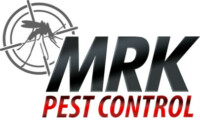Carpenter Bees
Carpenter bees create their nests by vibrating their mandibles (mouth) which allows them to tunnel into wood. This initial tunnel creates one single entrance to the nest. The entrance to the nest can also have additional tunnels leading off of the main entrance. The typical size of the hole is approximately 16mm (0.63 in).
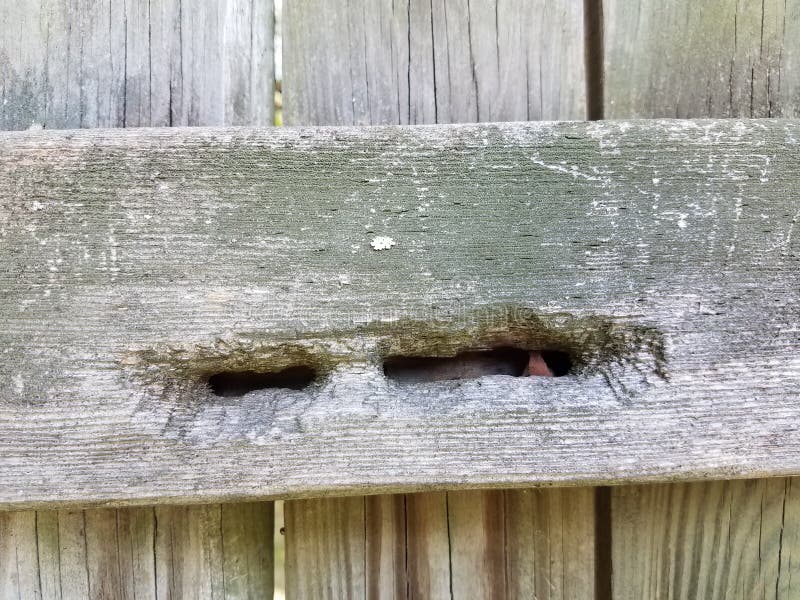
They do not eat the wood, instead, they discard the pieces of wood or reuse particles to build partitions between cells. The hole(s) serves as a nursery for broods and storage for the pollen/nectar upon which the brood subsists.
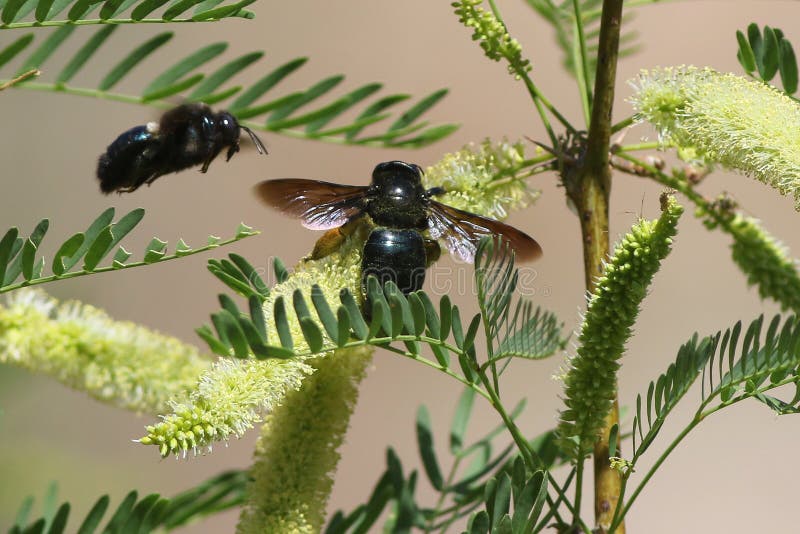
Carpenter bees are black in color and can look similar to a bumble bee. These bees are attracted to softened wood or wood that has water damage; common examples of nesting spots include decks, siding, fascia boards, and/or any wood style porches.
Yellowjackets
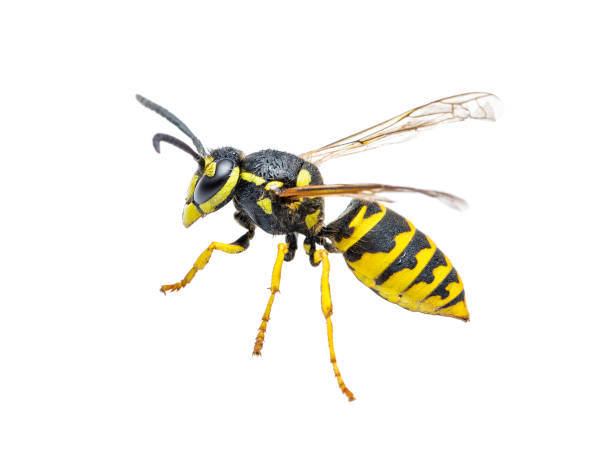
The appearance of Yellowjackets comes from the black and yellow color pattern on their abdomens. They can also look similar to bees, however differentiate in their smaller ‘waist’.
Yellowjackets are social hunters that live in colonies that have workers, males (drones), and queens. This is similar to how ants operate. Queens emerge during warm days and build a small paper nests in which they lay their eggs.
Yellowjackets are attracted to sugary substances such as fruit, flower nectar, and any other sugary human products such as a can of soda.
When they sting – Yellowjackets are very territorial and can become extremely aggressive if you get in the way of the entrance to their nest. The aggression is multiplied due to their ability to sting multiple times without dying.
Wasps
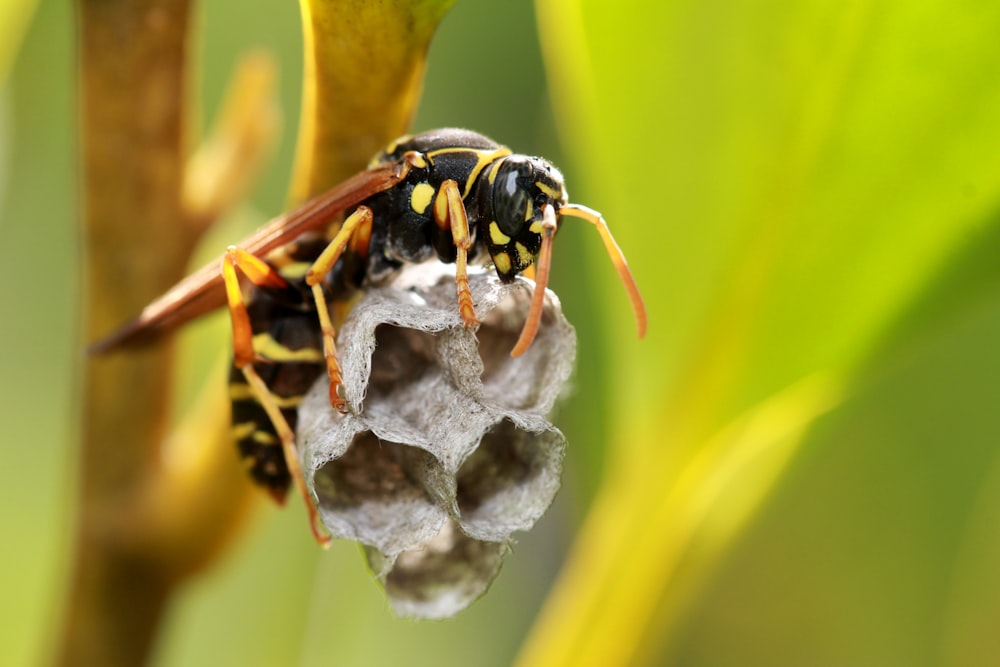
Similar looking to the yellowjacket, paper wasps get their name from the paper-like look to the nests they create. Typically, they create an ‘umbrella’ shaped looking nest.
Paper wasps like to create nests in residential type areas. They create their nest either in the shrubs of a garden or at high vantage areas of the home.
The best form of prevention for paper wasps is to mitigate the likeliness of them creating a nest around your home. These preventative measures can include trimming your shrubs or caulking and sealing any areas around your home that the wasps can create a nest within.
Bald Faced Hornet

Bald faced hornets are a relative to the yellowjacket, and their name comes from their black appearance.
These hornets like to create their nest three or more feet off the ground. This typically includes trees, shrubs, overhangs, houses, sheds, and other structures.
The worker hornets hover nearby their nests making it easy to determine if you have an infestation. Take notice of groups of pests flying around specific areas in your yard or home. These hornets are territorial and will sting you if you are too close to the nest.
These hornets are common in late summer with individual populations reaching the highest (100-400). After the summer the hornets die off and will not reuse their nest the next season, instead they build a nest out of new materials next season. This cycle repeats itself every year.
Ask us about our $25 off for a bee proof of your property or home this season.
